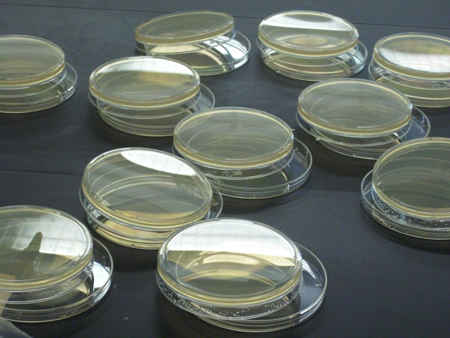The great gene hunt
The lab is in the process of discovering more genes involved in the defecation program through a large genome-wide screen. Since the C. elegans genome was the first multi-cellular eukaryote to be fully sequenced, we have a very good estimate of their gene number. To facilitate whole genome analysis, C. elegans researchers have generated libraries containing all of the genes. Each library is a huge set of genetically engineered plasmids, and each plasmid contains one of the gene coding regions in the genome. One of these libraries allows us to test each gene's function by creating an animal with reduced levels of that gene's product, i.e. the protein or RNA encoded by said gene, using a newly discovered process called RNA interference or RNAi. In RNAi short segments of double stranded RNA initiate a series of events that cause the targeted mRNA to be degraded. The target RNA is one that is complementary to one strand of the double stranded RNA. Performing RNAi experiments in C. elegans is pretty straightforward. The double stranded RNA segments needed to induce RNAi can be produced by the bacteria that the worms eat. Amazingly, when the worms eat this "RNAi bacteria," the active RNA agents are taken up by most of the worms tissues. Generating animals that lack gene product is as easy as feeding the worms special bacteria. After worms eat the "RNAi bacteria" you can expect to see the effects in just a few days later, often in the worm's progeny. We are currently using this RNAi feeding approach to identify gene products that are necessary for normal defecation. There are nearly 15,000 genes in C. elegans so the lab needs many students to participate in this screen. Students in the Genetics class' labs as well as my research lab are actively involved.
Back to Research


